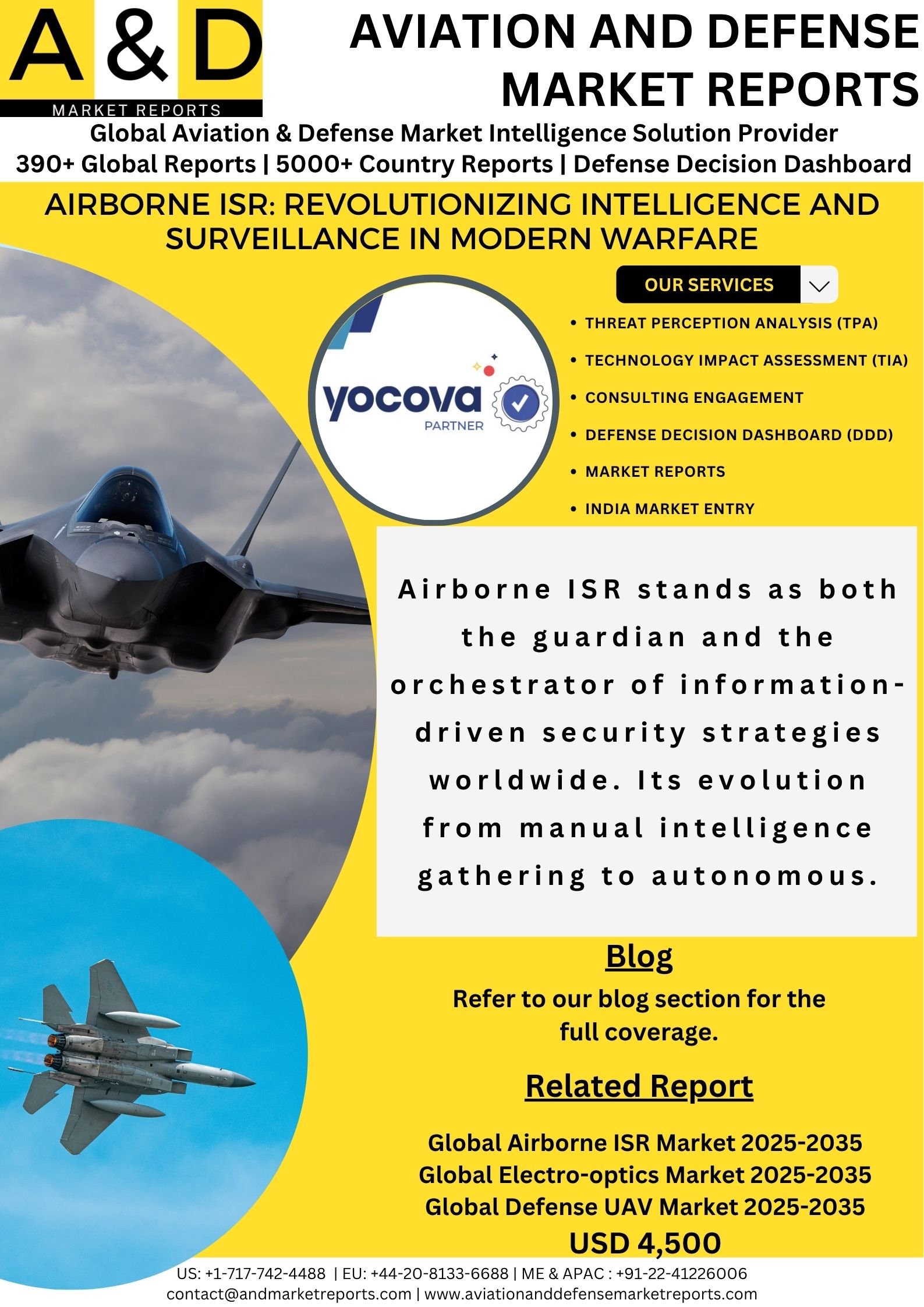Airborne isr , Airborne Intelligence, Surveillance, and Reconnaissance (ISR) is at the very heart of modern defense and security operations, enabling the collection, analysis, and dissemination of crucial intelligence that supports decision-makers in real time. Over the past two decades, the landscape of airborne ISR has evolved dramatically, driven by the unprecedented advances in sensor technology, connectivity, and artificial intelligence. Today, both manned and unmanned platforms equipped with sophisticated sensor suites traverse the skies, assimilating vast streams of data that facilitate enhanced situational awareness, rapid threat detection, and effective mission execution.
The Core Role of Airborne ISR in Modern Defense:
At its core, airborne ISR revolves around three key pillars: gathering intelligence, ongoing surveillance, and reconnaissance missions. Intelligence refers to the collection, processing, and analysis of information that establishes the foundation for operational planning. Surveillance focuses on the continual observation of areas, targets, or individuals, aiming to identify abnormal activities or emerging threats as situations unfold. Reconnaissance, meanwhile, often entails longer-duration operations that seek to monitor and assess combat zones, borders, or other critical areas, forming the basis for strategic decisions in high-stakes environments.
Technological Advancements Driving Airborne ISR
Much of the progress in airborne ISR today can be attributed to the dynamic fusion of sensors. Modern ISR aircraft—both crewed and autonomous—deploy advanced radar systems, electro-optical and infrared cameras, as well as signals intelligence (SIGINT) payloads. These sensors, sometimes bundled into modular pods, are seamlessly integrated through onboard computing systems powered by AI and advanced algorithms. Such integration allows for the real-time synthesis and analysis of diverse data streams, transforming raw information into actionable intelligence. For example, cutting-edge platforms can now autonomously highlight objects of interest, distinguish between threats and benign entities within congested terrain, and forecast enemy behavior.
Artificial intelligence is not merely an enabler; it is the engine driving the future of airborne ISR. Machine learning algorithms embedded within ISR fleets autonomously identify patterns, prioritize sensor inputs, and predict evolving threats—all with minimal latency. The transition from human analysts poring over sensor feeds to AI-driven fusion marks a paradigm shift. Battlefields, maritime domains, and urban landscapes are now mapped and monitored by autonomous systems capable of acting independently when circumstances demand. AI-based sensor fusion has also improved mission flexibility, allowing platforms to rapidly adjust surveillance parameters in response to changing operational requirements. The next generation of ISR solutions is expected to harness microservices, federated learning, and transparent AI pipelines, ensuring both precision and ethical deployment in critical scenarios.
Civil and Defense Applications of Airborne ISR
The applications for airborne ISR stretch far beyond traditional military domains. Border and maritime patrol are among the most prominent use cases, wherein ISR assets scan vast coastlines and territorial waters, combating illegal trafficking, piracy, and unregulated fishing. Homeland security agencies increasingly rely on ISR technologies for search-and-rescue missions, disaster response, and environmental monitoring. The persistent surveillance possible with unmanned platforms—ranging from hand-launched drones to high-endurance UAVs—reduces risks to human personnel, increases operational reach, and enables rapid reaction in dynamic environments.
The relentless demand for more advanced ISR capabilities is matched by rising investments in research, development, and procurement. Many countries have prioritized the modernization of airborne ISR fleets, integrating next-generation radars, communications systems, and AI-powered analytic suites. In North America, strong defense budgets and R&D in unmanned systems have propelled significant growth in both manned and autonomous ISR assets. Europe and Asia-Pacific follow closely, with regional powers recognizing the strategic imperative of robust intelligence gathering in an era of increasingly complex threats.
Despite its meteoric rise, airborne ISR is not without challenges. High operational and integration costs, cybersecurity concerns, and ethical complexities surrounding autonomous systems continue to shape the market. Ensuring secure transmission of sensitive intelligence remains a top priority as ISR platforms begin leveraging cloud-based networks for instantaneous data sharing. Furthermore, interoperability across legacy and modern fleets poses another dimension of complexity. The industry, however, is responding with customizable, modular platforms designed for rapid upgrades and future adaptability, maximizing value without compromising mission performance.
The Future of Airborne ISR: Smarter, Lighter, and More Autonomous
The future promises even greater transformation. Recent innovations, such as the Evenlode Lite data transmission system and AI-powered multi-sensor fusion technologies, demonstrate the industry’s shift towards lighter, smarter, and more connected ISR assets. Autonomous platforms will increasingly manage surveillance and reconnaissance tasks independently, aided by real-world data and continual retraining of AI models. As ISR platforms gain greater analytical prowess, the human operator’s role will evolve from direct control to strategic oversight, guiding autonomous systems while focusing on complex decision-making and ethical considerations.
In conclusion, airborne ISR stands as both the guardian and the orchestrator of information-driven security strategies worldwide. Its evolution from manual intelligence gathering to autonomous, AI-empowered analytics signifies a new era—one where the skies are patrolled by vigilant, adaptable platforms capable of responding to unpredictable threats. Whether used for military, humanitarian, or law enforcement missions, airborne ISR will remain essential in safeguarding borders, empowering leaders, and maintaining a decisive edge in global security landscapes. The rapid pace of innovation, coupled with persistent investment, ensures that airborne ISR platforms will continue to shape the future of surveillance, reconnaissance, and threat management for years to
